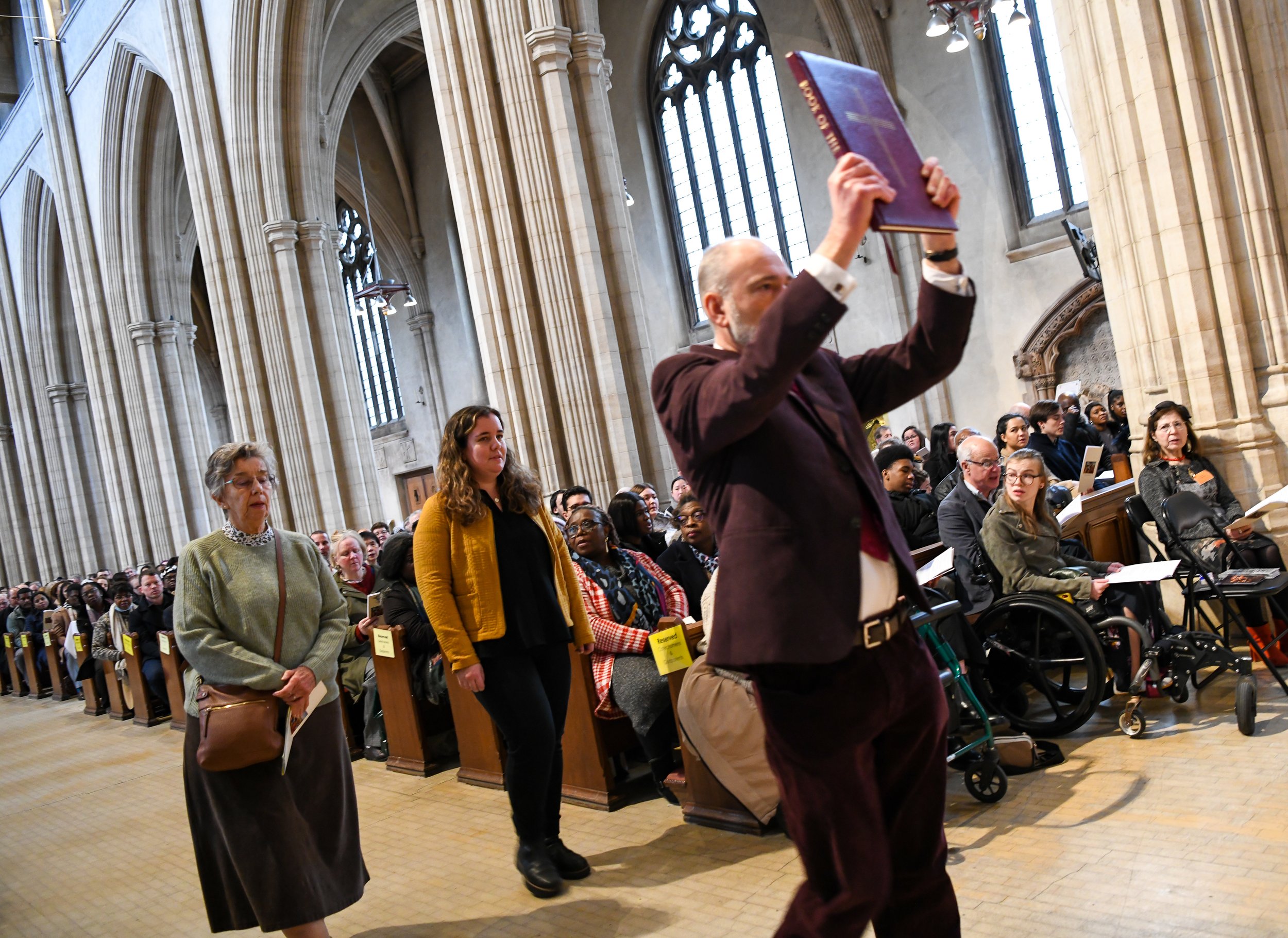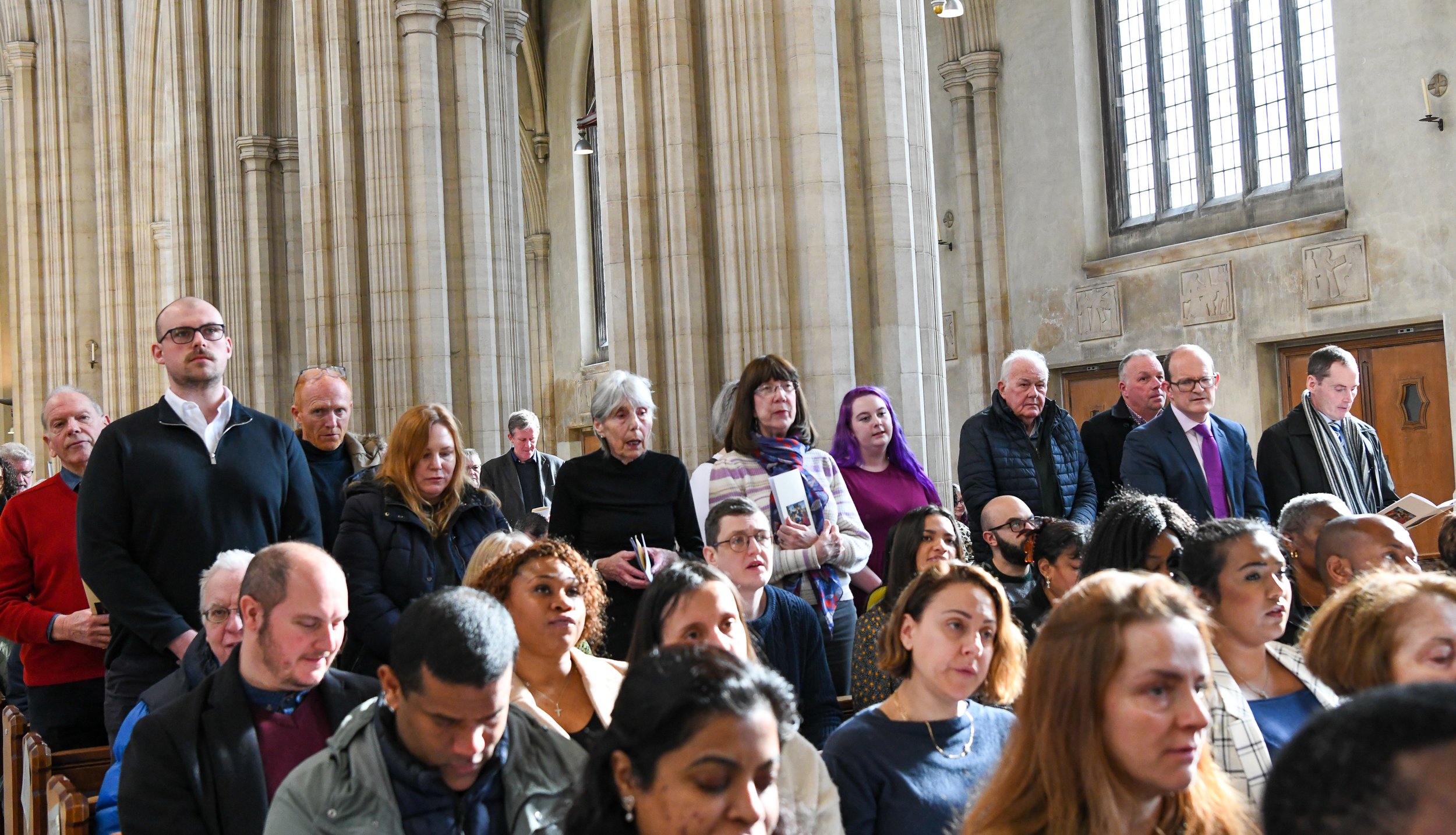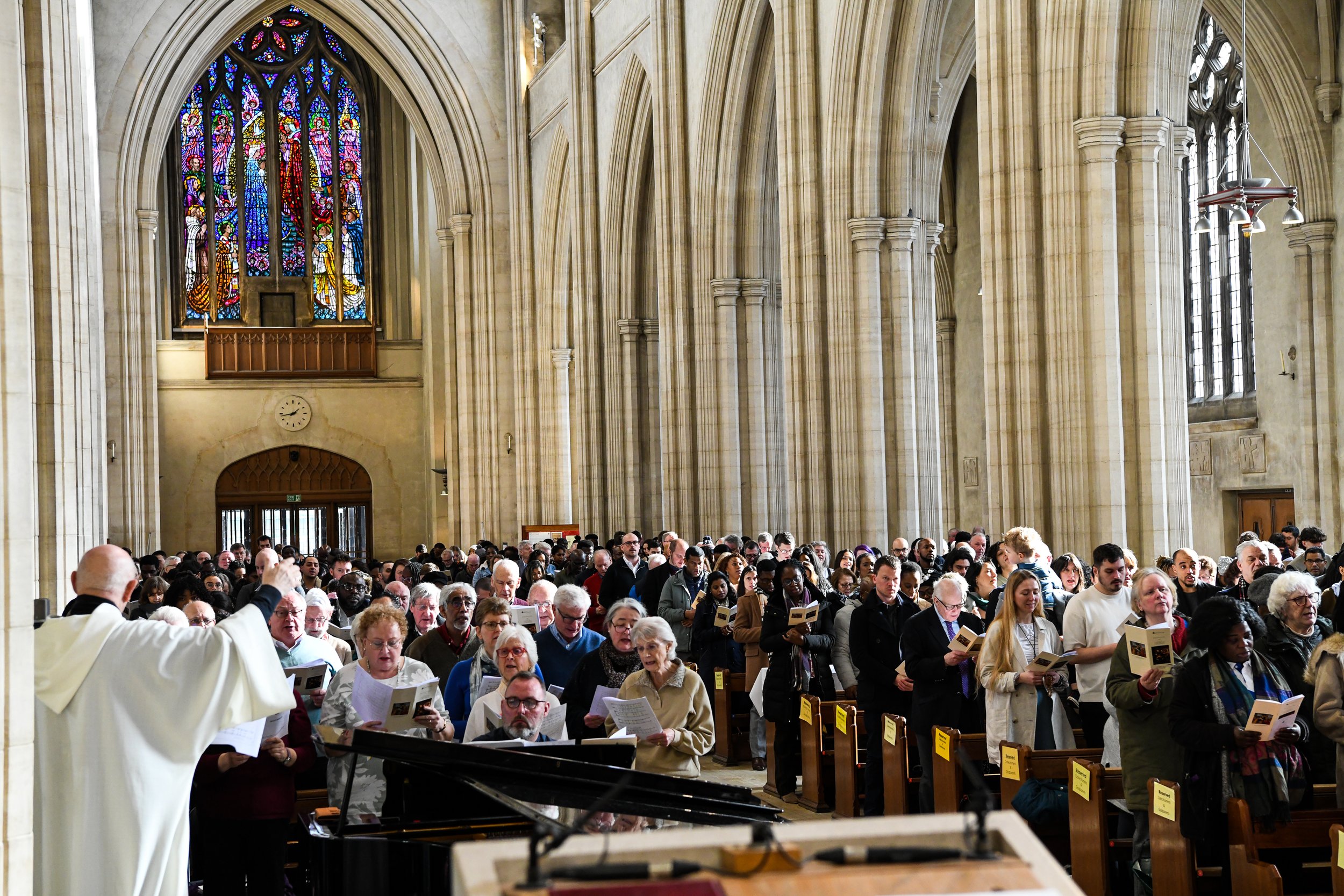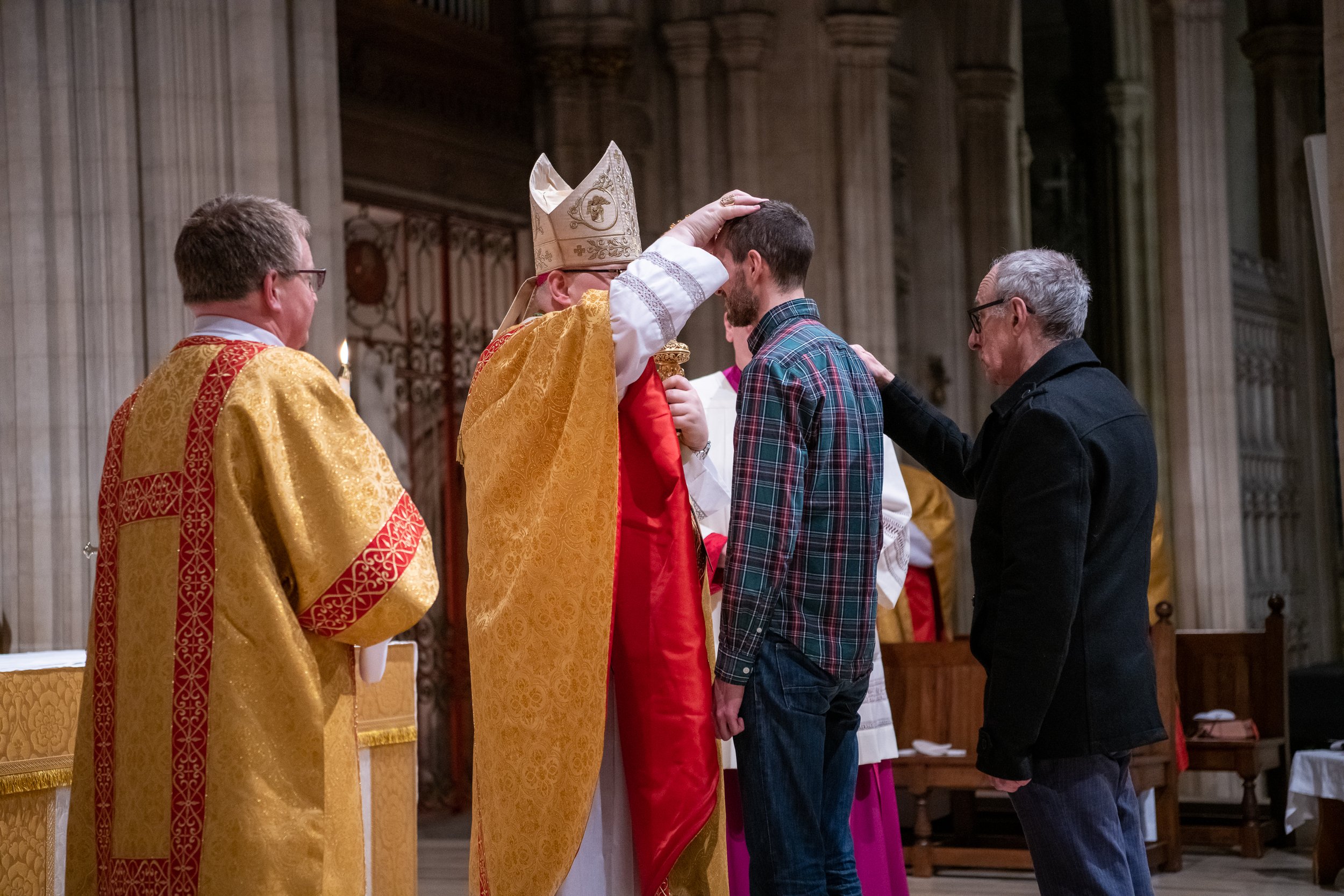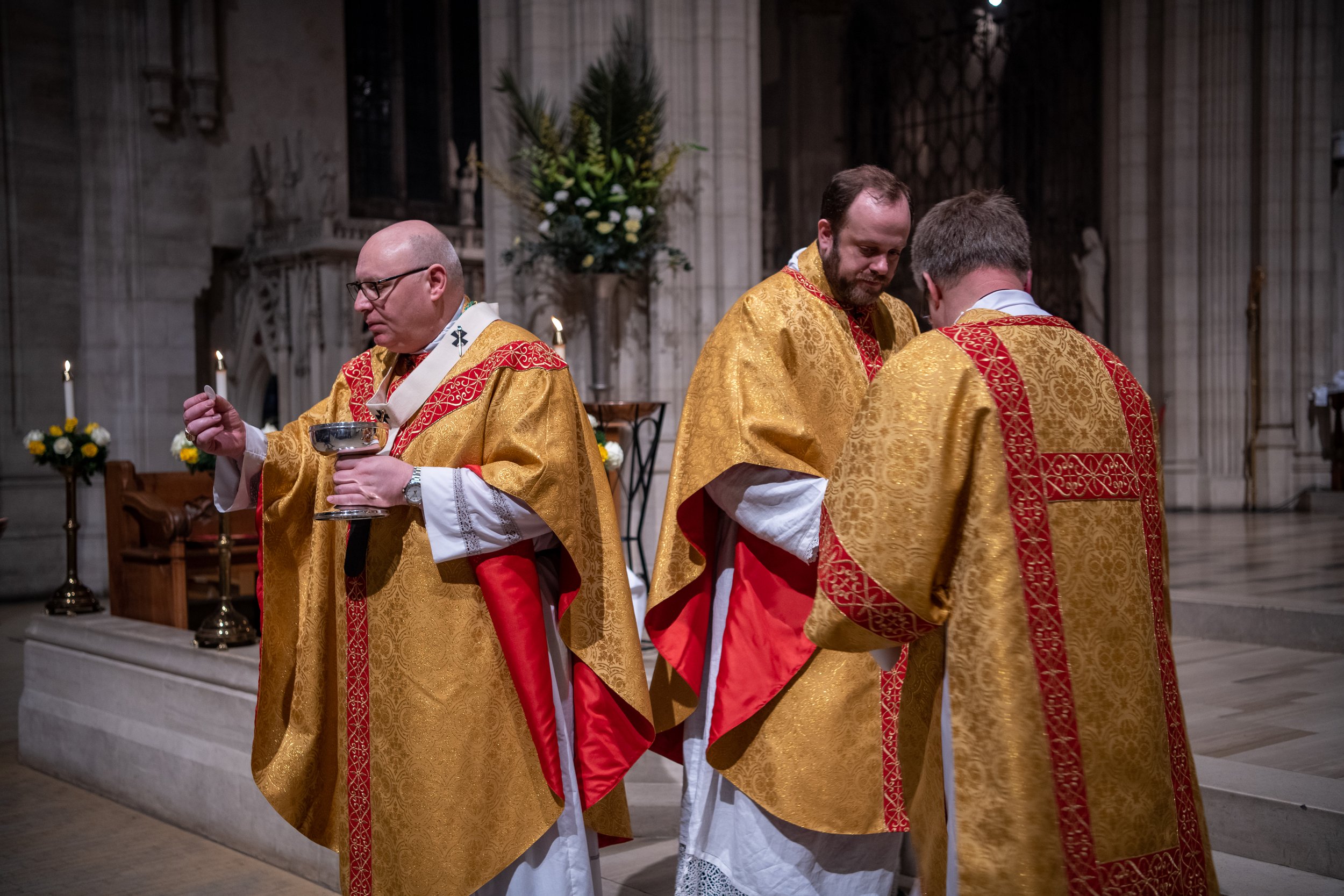Become a Catholic
When an adult has encountered the love and mercy of God and developed a personal relationship with Jesus Christ, they may want to formalise that experience by choosing to enter the Catholic church and ‘become’ a Catholic. This process takes time and is known as the Rite of Christian Initiation for Adults (RCIA).
There are several steps on this journey and it takes time. It is important that the person undertaking the journey understands what they are taking on and desires to enter into full communion with the Catholic Church.
Stage 1 - Evangelisation leading to Enquiry
(Hearing the Good News and Asking Questions)
The person has heard the Good News of Jesus Christ, usually witnessed through another believer. This has awakened in them the desire to find out more, and so they begin their journey towards the Catholic church begins with enquiry. What the journey involves and how their local Catholic community can help and support them on their way will vary depending on their journey so far. It is helpful if the person is already rooted in a local Catholic parish. Most chaplains will offer the RCIA programme for staff and students, so contact your chaplain to find out more.
Stage 2 - Catechumenate
(A time of of learning about the faith)
This stage is marked by the formal entry into a time of learning about the faith. Supported by the faith community, the person is publicly presented to the parish community as someone desiring to become a full member of the Catholic Church. If the person has never been baptised, they are called a catechumen (from the Greek, meaning to prepare for baptism). If they are already baptised in another Christian church that is accepted by the Catholic Church, i.e. a baptism in the name of God the Father, the Son and the Holy Spirit, they will be a candidate.
Once they have been accepted into this stage, the formation continues so that they grow not just in their practice of their faith but in their knowledge and understanding too.
The stage of the Catechumenate ends at the beginning of Lent. At this time, in Cathedrals across the country, there is a ceremony called ‘The Rite of Election’. This is where each person, having been found ready is entered in the Book of the Elect and presented to the Bishop/Archbishop.
Stage 3 - Enlightenment
(a time of reflection on your current life and choosing to turn to God)
In the weeks of Lent, the Elect are examined about their desire to enter fully into the faith. These simple ceremonies are called The Scrutinies. They are based on Gospel passages that show the way that God can break into people’s lives and be turned around.
Stage 4 - Rites of Initiation
(The person receives the sacraments of Baptism, Confirmation and Holy Communion)
Usually at the Easter Vigil - the third part of the Easter Triduum, taking place on the evening of Holy Saturday, those seeking full entry into the Catholic Church will be baptised, confirmed and receive the Eucharist for the first time. Those who are already baptised will make a statement of faith regarding the Catholic Church and then be confirmed and receive the Eucharist for the first time.
Stage 5 - Mystagogia
(Ongoing Learning and Support)
This is a really important stage of ‘settling in’ and ongoing formation and support. It is well known that after people choose to enter the Church, they can equally easily walk away, for a whole range of reasons. With the regular classes ending they can feel isolated and alone, which is why it is important that whilst less, there are still times to support and accompany the newer members to establish them in the community and enable them to live their lives well.
If you are interested in becoming a Catholic, please contact your chaplain.


